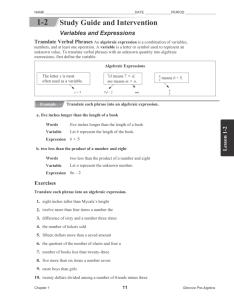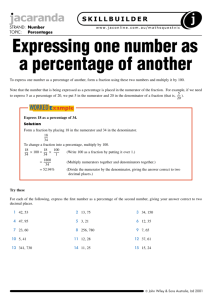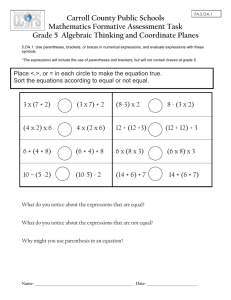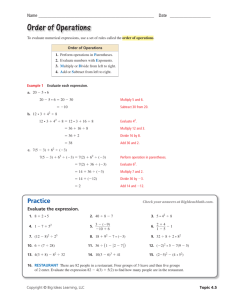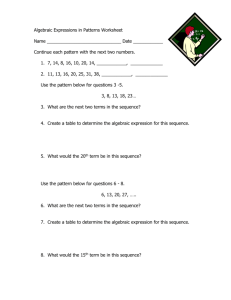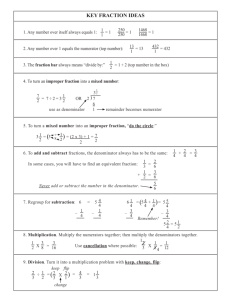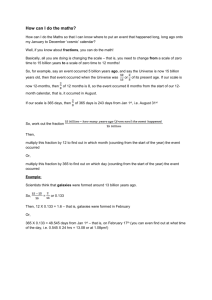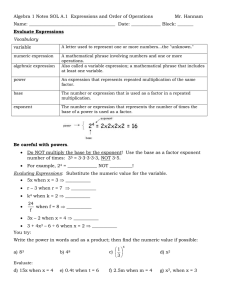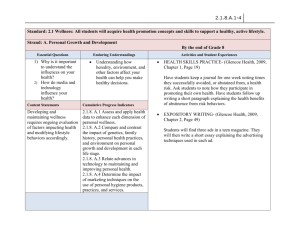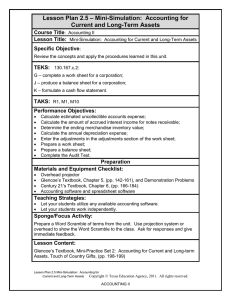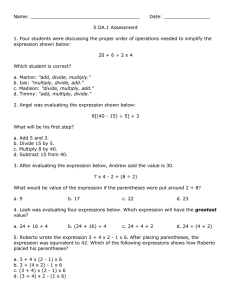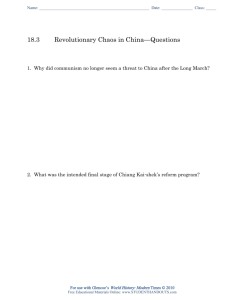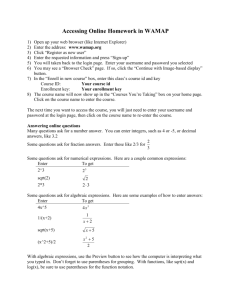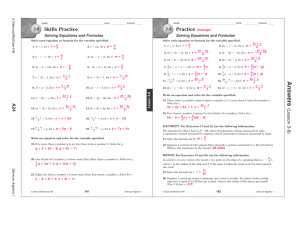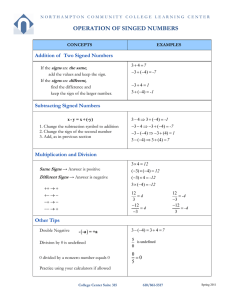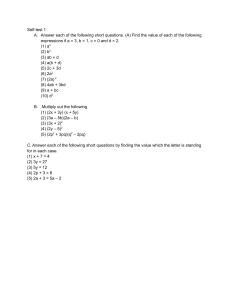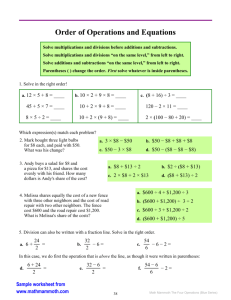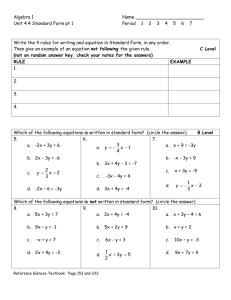Order of Operations (Pages 11–15)
advertisement
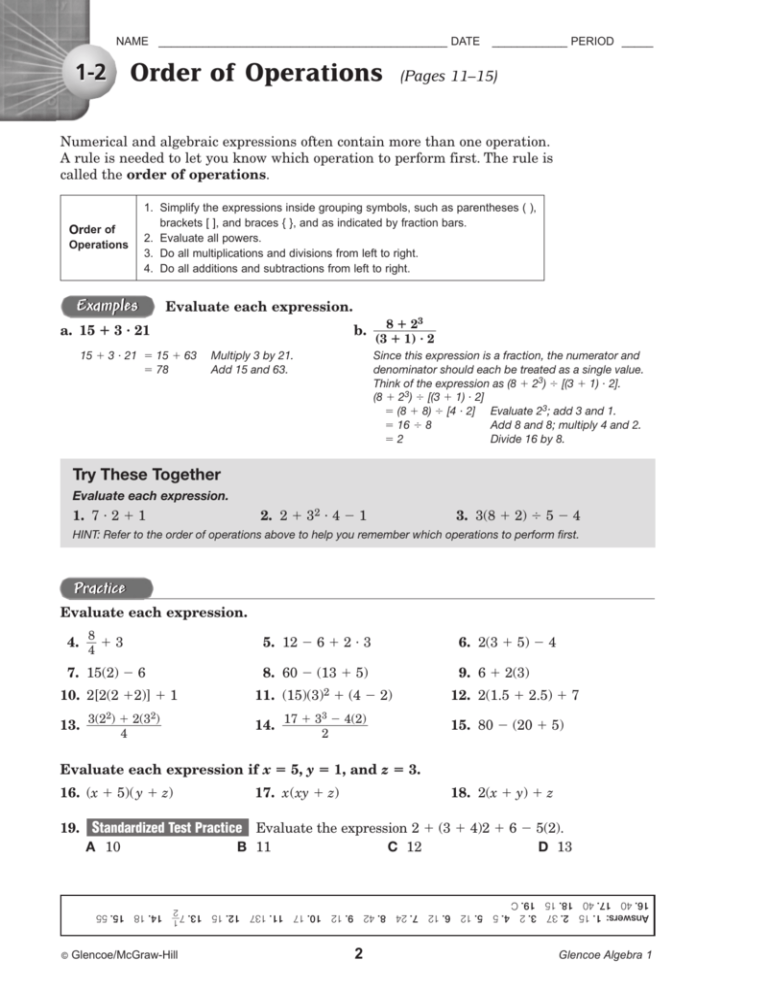
NAME ______________________________________________ DATE
1-2
Order of Operations
____________ PERIOD _____
(Pages 11–15)
Numerical and algebraic expressions often contain more than one operation.
A rule is needed to let you know which operation to perform first. The rule is
called the order of operations.
Order of
Operations
1. Simplify the expressions inside grouping symbols, such as parentheses ( ),
brackets [ ], and braces { }, and as indicated by fraction bars.
2. Evaluate all powers.
3. Do all multiplications and divisions from left to right.
4. Do all additions and subtractions from left to right.
Examples
Evaluate each expression.
82
b. 3
a. 15 3 21
(3 1) 2
15 3 21 15 63
78
Multiply 3 by 21.
Add 15 and 63.
Since this expression is a fraction, the numerator and
denominator should each be treated as a single value.
Think of the expression as (8 23) [(3 1) 2].
(8 23) [(3 1) 2]
(8 8) [4 2] Evaluate 23; add 3 and 1.
16 8
Add 8 and 8; multiply 4 and 2.
2
Divide 16 by 8.
Try These Together
Evaluate each expression.
1. 7 2 1
2. 2 32 4 1
3. 3(8 2) 5 4
HINT: Refer to the order of operations above to help you remember which operations to perform first.
Practice
Evaluate each expression.
4. 8 3
5. 12 6 2 3
6. 2(3 5) 4
7. 15(2) 6
8. 60 (13 5)
9. 6 2(3)
4
10. 2[2(2 2)] 1
11. (15)(3)2 (4 2)
12. 2(1.5 2.5) 7
3(22) 2(32)
13. 17 33 4(2)
14. 15. 80 (20 5)
4
2
Evaluate each expression if x 5, y 1, and z 3.
16. (x 5)( y z)
17. x(xy z)
18. 2(x y) z
19. Standardized Test Practice Evaluate the expression 2 (3 4)2 6 5(2).
A 10
B 11
C 12
D 13
Answers: 1. 15 2. 37 3. 2 4. 5 5. 12 6. 12 7. 24 8. 42 9. 12 10. 17 11. 137 12. 15 13. 71
2
16. 40 17. 40 18. 15 19. C
14. 18 15. 55
©
Glencoe/McGraw-Hill
2
Glencoe Algebra 1

